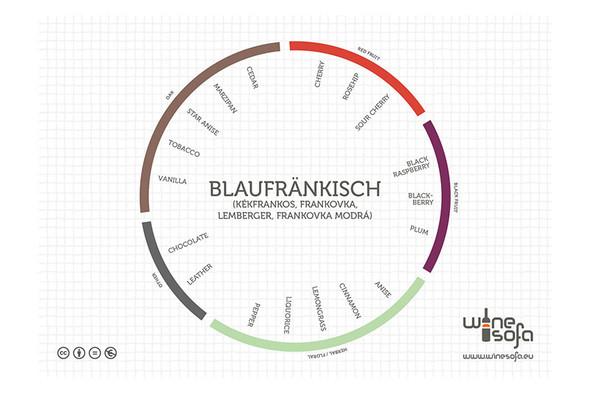"The Blaufränkisch is a thoroughly central European variety. This traditional Austrian variety is a cross between Blauer Zimmettraube and Weißer Heunisch. Blaufränkisch was previously widely-planted throughout the Habsburg Monarchy, and is the most important variety in Mittelburgenland, called Blaufränkischland." (Austrian Wine)
If there is one important black grape variety in Austria, then it has to be Blaufränkisch. At least in the Burgenland, elsewhere Zweigelt actually reigns. Well, the Burgenland originally (for 1000 years) was part of the Kingdom of Hungary; Hungarians, Austrians (Germans), Croatians and, to a lesser extent, Slovenes lived there too; and the region’s capital was Odenburg, nowadays the city of Sopron in Hungary. Therefore, once the borders were drawn, the Burgenland was left without a capital. However, the vines remained there! (Of course, around Sopron too, the city still calls itself the capital of Kékfrankos, as Blaufränkisch is known in Hungary!)
Thanks to the Austrian marketing machine, Blaufränkisch is now considered an Austrian variety, although there are only 3,000 hectares in Austria as opposed to 7,300 in Hungary! Following this short thought-provoking introduction, I should add that Blaufränkisch is well ahead of Hungarian Kékfrankos in uniformity of style, communication as well as concerning respect and price.






